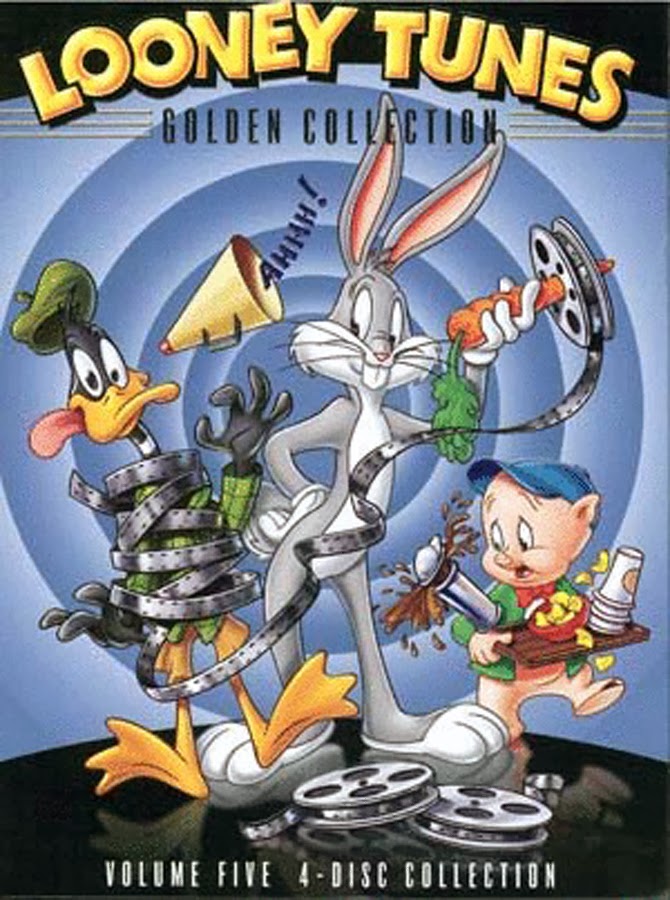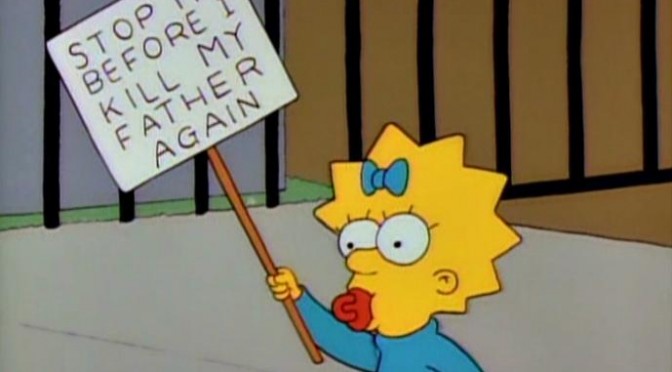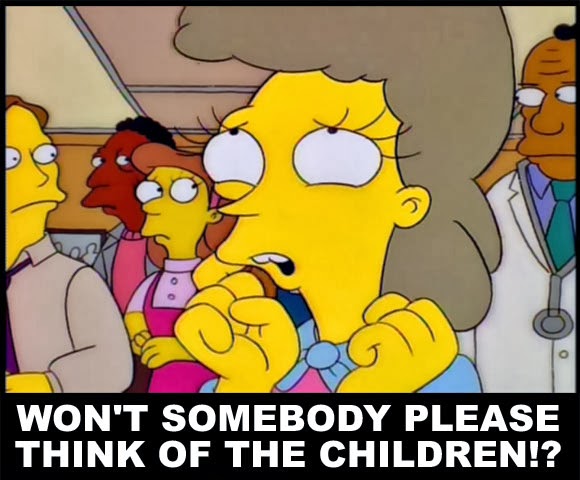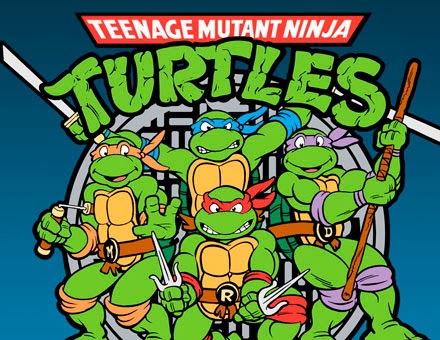As part of the rebirth of a long dead idea of Masochist Mondays (though I don’t intend to use the title, just the label), I’m continuing my current trend of writing about something about myself every Monday that I can declare as my line in the sand. Right now, if I follow my schedule right and keep ahead of it, this will be part of a routine that I will call the digital mullet: serious in the front, party in the back (Smartass Fridays?).
Violence in the Media
It wasn’t very long ago that I wrote a similarly themed postabout what I think our responsibilities, as creators, is to the public. In that post I addressed the fact that no one could predict any lunatic could have taken “inspiration” in someone’s work and put the responsibility of what those people did onto the shoulders of the assholes who did it. But at the time, I didn’t really clarify how I came to the conclusion that it wasn’t our responsibility. And, really, I only addressed whether it was our responsibility, not whether or not the depiction itself was right.
The fact I’ve argued creators are exempt from responsibility for these things shows at least a good part of what I believe. But in terms of how other people interact with it, I think it goes much further. Not only do I think that violence in our media is acceptable – I think it’s necessary.
During my last post on violence in media, I shared a video from Siskel and Ebert that is worth watching if you’re interested in the subject. And in that video they mentioned that the depiction of violence in film was not glorifying the violence in most cases but instead framing a situation around that violence. They pointed out, quite accurately, that our culture reflects our society and explores the unpleasant facets of our existence worth thinking about. In essence, when we watch a film with violence, we’re left to ask why it happens in the real world – a conversation worth having.
But inevitably someone wants others to “just think of the children”. So, seeing as this is Masochist Monday, I’ll bite. Let’s think of the children and address a branch of the media most likely to be absorbed by their fragile little minds.
Cartoons
I aim here because this is the domain of children as far as our culture is concerned (though I’m not ashamed to admit I’m going to watch animation probably until the day I die). But I also want to address this because this is a field where the most ridiculous reactions shaped some incredibly stupid things in my childhood that tended to either make things worse or completely missed the mark. To do that, I’m going to cite three examples and show you just how stupid people treat this subject. First, let’s start with a “classic” of the 80s and 90s.
Teenage Mutant Ninja Turtles was probably a big part of your childhood or the childhood of a sibling at some point in your life. But here’s the thing, have you ever stopped to consider why exactly the foot soldiers were robots? In fact, have you stopped to consider how often the turtles actually used their weapons in a fight? If you did, you’d realize that they never used them on anything that wasn’t a robot. That was exactly the point of the ninjas being robots in the first place.
You see, in the 80s and 90s there was an upswell of concern parents who wanted to restrict violence in the media and this led to some insane legislation on the issue. One of the big rules was that anything geared towards children couldn’t depict certain forms of violence. Guns had to fire lasers so they wouldn’t be realistic, no one could die and ninja turtles could not use their weapons on living enemies. Considering the original comics were actually fairly violent, this led to a problem for the creators: how the hell do you animate something where ninjas fight other ninjas in the streets of New York without violating this rule? Simple, robots.
But the sanitation didn’t stop just at the cartoon, it branched into the films. If you think about the movies, where an army of robots didn’t fit the tone they were going for, they almost never make contact with their weapons. In fact, it becomes so extreme that, at one point, Michelangelo is reduced to using sausage links instead of nunchucks.
 |
| “This is what we play for!” |
But then TMNT isn’t the only example of people not thinking their stuff through entirely. One of the oddest examples of over-reaction that I can recall actually comes from a cartoon older than me and most of the people reading this.
You see, while shopping in a Costco a few years ago, my dad and I passed by some DVD box sets and noticed one that caught our eye. It was a series of cartoons that both of us had enjoyed through our lives and we thought it would be a great thing to share with my sister’s kids (or hell, just to watch ourselves). So we picked it up and we caught sight of a label on it that marked it as being inappropriate for children due to violence. It literally said we should not let children near it.
We were, to be honest, shocked. Both of us had watched these for decades and are both infamously mellow people. We aren’t violent and we don’t even own a gun between the two of us (unless you count antique black powder rifles that my dad inherited from his parents). So the idea that this could be a corruptive force in the hands of children was astonishing to the both of us. What was this horrible piece of violent propaganda?
 |
| Yeah, I am not kidding. |
And that’s where you can really see how far we’ve taken our reactions to violence in the media. Too often we’ve labeled things that are harmless as being the root of all evils because we can’t admit to ourselves that it is really part of human nature. We try so hard to suppress this natural tendency of ours rather than addressing it that we do things that are a little bit stupid. But when I say that, I’m not basing that just on some stupid label. No, for that, I have a far worse example from my childhood that shows censorship is just a bad idea in general coming from one of my favorite cartoons of all time.
See, a well known fact on the internet, but not among a lot of parents or people who avoid studying old nostalgic cartoons, is that in Batman: The Animated Series the Joker wasn’t allowed to be seen shooting anyone. Now, seeing as the show had a darker, more serious tone and the Joker was supposed to be the most threatening person in the rogue’s gallery, the creators had to come up with a way for him to seem threatening without him actually doing something that the censors would consider “violent”. In comes the Joker Gas.
Holy shit, look at that face. That’s the face of a man who is dying from laughter. In the moments of uncontrollable laughter, he suffocates, left with a smile permanently frozen to his face. And the whole time the Joker is mocking the victim. This is preferable to a single gunshot according to censors.
But, once again, it gets worse as the censors continue to not learn their lesson. As Batman eventually became Batman Beyond (an underrated show by comparison), a straight to video movie was put out to connect the two series together: Return of the Joker. In it, we see the death of the Joker, a scene that was the crux of the entire plot and couldn’t possibly be removed without damaging the overall quality of the movie. Luckily, the movie was running on slightly less severe rules due to not being on television.
However, censors hadn’t learned their lesson from the Joker Gas decision and thought that the death scene needed some tampering. In the original version of the scene, Tim Drake, Robin, has been tortured to the point that he has been driven to the point of insanity. Being handed a gun, he’s asked to shoot Batman by the Joker, only to have Tim turn the gun on the Joker instead. It was a quick flash of a scene, violent but emotional and having consequences without glorifying the act. It was probably one of the most well handled scenes of violence I’d ever seen.
Seriously, did you have to feed us nightmare fuel as children?













One thought on “Violent Media & Censorship”
Comments are closed.